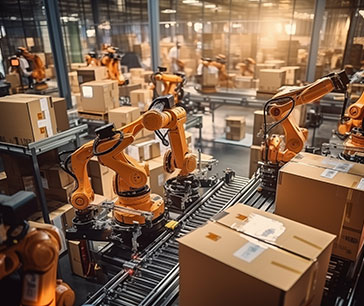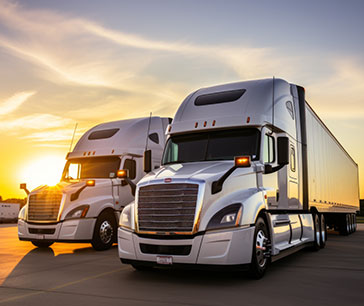Table Of Contents

Lalit Janardhan Katare

Akhilesh Animesh Prabhugaonkar
Automated Truck Loading Systems: Why it is Crucial for Logistics Businesses?

Highlights:
- Introduction
- Vital components of automated truck loading systems
- Development of automated truck loading systems
- Future landscape of the domain
- A light on latest developments in the domain
Logistical delay is one of the primary reasons behind the non-competitiveness of products in the global markets. This is because the products do not get any value addition, yet their costs increase with the passing of time. Hence, addressing these delays becomes an important consideration for any business. Introducing automation in logistics is one way to address this issue. Automated truck loading system is one such example. These systems are aimed at reducing the time required for loading and unloading goods in a truck.
Important components of automated truck loading systems
Automated truck loading systems have pallets that can be inserted or removed from a truck automatically without any human intervention. For this system to work efficiently, there are certain components that work in tandem. For example, automated truck loading systems have a roller or chain component that moves vertically hydraulically. Similarly, these autonomous vehicles also have extendable forks which are crucial for smooth loading or unloading of goods. Also, an important characteristic of this automated truck system is the presence of skids which also help in raising and transportation of goods.
Evolution of automated truck loading systems
Previously, automated truck loading systems were mainly used in the material handling industry. However, the incorporation of several automated guided vehicle systems and engineered conveyor belt systems into the trucks and trailers has enhanced the various logistic operations across several industries. These days, such advanced systems have promoted trailer loading capacity by 200% - 300%. They can handle bulk products including recycled tires, garbage, and agricultural products. Several manufacturing industries such as consumer products, food & beverage, automotive, and appliance manufacturing domains have started using these systems for loading and unloading their products to optimize their production and distribution process. Additionally, the increasing use of the latest components such as trailer skates, slip chains, and roller beds has significantly reduced manpower for shipping and receiving goods. They can further help eliminate product damage, uncertain incidents, and ergonomic injuries during lifting operations.

Potential growth drivers of the industry
The rising pace of global industrialization is anticipated to be the primary growth driver of the global automated truck loading system industry. Furthermore, increasing emphasis on worker safety in industries is predicted to open up new avenues of growth in the industry. The ability of automated truck loading systems to integrate with other technological solutions is expected to amplify the opportunities available to the industry.
On the basis of system type, the belt conveyer system segment is predicted to be the fastest growing with a CAGR of 10.9% from 2022 to 2032. On the other hand, when studied based on industry, the construction & manufacturing segment is predicted to have the highest CAGR of 10.9%. Regional analysis has shown that the China automated truck loading system industry is likely to register a CAGR of 11.8% during the forecast period.

Partnerships, collaborations, and acquisitions
The competitive nature of automated truck loading system industry can be adjudged from the numerous strategic alliances that are formed in the industry. For instance, in November 2020, Joloda International Ltd (JIL) announced the acquisition of Loading Automation Inc (LAI). The acquisition is predicted to create huge expansion opportunities for Joloda International Ltd (JIL) in the coming period.
Similarly, in September 2023, Dexterity AI, a leader in robotics material handling, and FedEx, a major transport company, announced collaboration to develop truck loading robots for the logistics industry. Such partnerships not only help the companies concerned but also the entire industry in general.

To sum it up, the automated truck loading system industry is estimated to witness a huge surge owing to rapid industrialization and growing emphasis on worker safety. Furthermore, the competitive landscape of the industry is likely to push the growth rate higher.
To gain a competitive advantage in the automated truck-loading system industry and develop new strategies, feel free to talk to our esteemed analysts today! They can also help you gain a deep understanding of the potential investment opportunities across various regions.

